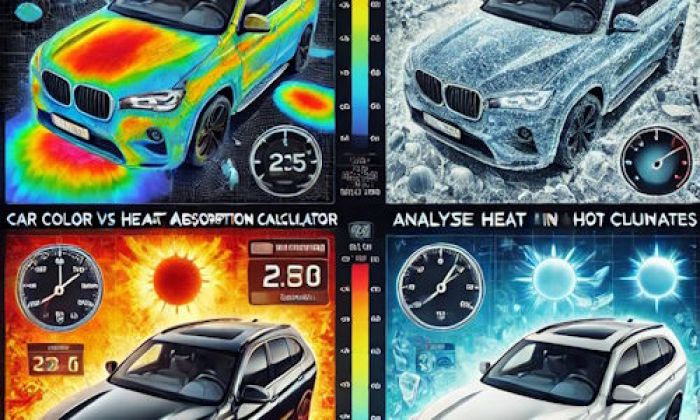Utilize a scan tool when an idle relearn doesn't help. Some vehicle makes and models don't even need to follow the normal reset procedure. All they need is a compatible diagnostic scanner to get the idle back to normal.
Engine electrical problems highlights
- Level of urgency:high
- DIY inspection:possible but complicated
- DIY repairs:impossible
- Can you drive?yes, if it starts
- Price of repairs:$150 - $650
- If ignored:no-start, harsh work, warning lights
- Ways to fix:good scanning for codes, professional repairs
.jpg)
What Is an Idle Relearn?
An idle relearn is also referred to as a throttle body relearn. It helps a car to adapt to a new battery and operate well. The vehicle will also attain its optimal idle speed. Engines produce their lowest emissions at idle speed, thereby saving fuel.
You may need to do an idle reset after a battery swap or uninstallation due to a dead or damaged battery. A relearn will also be necessary when the battery cables have been disconnected or the throttle body is changed. A dying battery may also warrant this need.
Why Is an Idle Relearn So Important?
Idle relearning is important for new-model vehicles that have ETBs (electronic throttle bodies). Most of these vehicles don't have physical wires linking their throttle bodies to the accelerator pedals. They rather possess ETBs that feature plates, motors, and sensors.
The throttle coordinates airflow in the engine as well as idle speed. It gets signals from the vehicle during its idling operations. The signals received contain information about the proper speed for the idle based on engine temperature and accelerator pedal pressure.
Throttle plate programming and control is determined through the above process. And swapping out your car's battery will disrupt such an operation. The PCM will lose its memory and cease to be linked with the throttle. This will displace the plate.
Your car will have to undergo a relearn so that the computer can re-establish perfect communication with the ETB. Thankfully, the idle is designed for automatic self-relearning. But it can only relearn effectively with the aid of the driver.
The relearning procedure is easy plus it takes little time and effort. Although you may get frustrated at some point if the steps aren't followed as directed.
You don't need a professional to do the job unless you're OK with letting go of some cash for an expert's service. Use the steps I'll present in the next subheading if you'll be going the DIY way.
Idle Relearn Procedure
Many vehicle makes and models don't come with a manual for the reset. So you may have to figure out how to guide the process on your own. I'll make it easy for you with the five steps presented below.
Step 1: Warm the Vehicle
Warming your car is the first thing to do because it will help the vehicle relearn the amount of airflow needed for driving. The throttle plate will eventually be set in its rightful position.
Drive for at least 5 minutes for good warming. Although you can decide not to include this as part of the steps. Still, it makes the reset easier.
Step 2: Engine Off; Handbrake Up
Put the engine off and leave the handbrake pulled up after warming the car. Proceed to put the key into the ignition, switch it off, and switch it back on. Put the ignition on "off" and "on" again to complete this step.
Step 3: Start Your Car
You can start the car on successful completion of steps 1 and 2. Release the handbrake while your foot is pressing the pedal. The vehicle will play its part after.
Step 4: Leave the Vehicle Idle
This phase involves leaving your car idle so that it can learn its idle speed. Do this for some minutes while observing the changes in RPM. You'll know things are going good when the RPM number begins to increase. It means the computer is communicating well and it's trying to achieve the right airflow.
Remember to put off the radio, AC, and other electronic devices so that the vehicle can concentrate on the reset. Having the AC on may tamper with the relearning results.
Step 5: Assess the Idle
The last part involves checking the working situation of the idle after step 4. Conduct this test by switching on accessories such as the AC and fan to see how the idle performs. You'll need to repeat the entire reset procedure if the idle level is wrong.
The engine can sometimes idle too high or try to stop running. Depress the gas pedal a little or drive for some minutes to help the PCM adjust to its proper settings. Go ahead with repeating the whole relearning process if this doesn't work as well.
Note: The relearning process may not be observable for some PCMs. Also, your car model may require a diagnostic scanner for the reset rather than relearning.
Keep in mind that you may need to go through a slightly different process from the above guidelines. This is dependent on your car model. Further research for vehicle-specific guidelines will be necessary in this case.
Resetting the Engine after Battery Replacement
An ECU (engine control unit) reset is also as important as an idle reset after swapping out the battery. The check engine light (CEL) will most likely come on when an ECU reset is needed. You can perform this operation manually by implementing the following steps:
Step 1: Disconnect the Positive Battery Terminal
Make use of a suitable wrench to remove the bolt that's holding the battery clamp. Remove the terminal after and keep the wire away.
Step 2: Let the Battery Rest
Wait for at least 5 minutes so that the vehicle's computer and devices can have adequate time to lose power.
Step 3: Re-Install the Positive Battery Terminal
Re-attach the wire to the terminal so the computer and devices can receive power again.
Step 4: Start the Vehicle
Start your car after the systems have powered up and inspect the CEL. You'll know that the operation was effective if the CEL is off.
Step 5: Go for a Drive
Drive the vehicle for some minutes so that it can achieve its running temperature. Another way to do this is by leaving your car running.
Resetting the ECU with a Diagnostic Scanner
This approach should only be tried when the previous method fails, that is, the CEL still coming on. An OBD scan tool will read and remove errors in the vehicle's system memory and data. The CEL error will be taken care of this way.
Buy a compatible scanner at your local automotive hardware shop. It's advisable to invest in a good scan tool even if the price is on the high side. You'll most likely get the best results from a sophisticated product that offers value for money spent. Some diagnostic tools feature more options for error code rectification.
ECU Reset Steps with a Scan Tool:
- Step 1: Look for the OBD port for the scan tool's adapter. It's usually in the area under the steering wheel.
- Step 2: Connect the adapter securely.
- Step 3: Launch the app on your phone or PC depending on which device it's compatible with.
- Step 4: Link the app to the scanner's adapter.
- Step 5: Start the scan and wait for the results.
- Step 6: The scan results page will display all the error codes that were found. They are the reasons why your vehicle's computer isn't working properly.
- Step 7: Erase the errors.
- Step 8: Restart the vehicle.
- Step 9: Try the scanning process again to see if any error pops up again.
- Step 10: Take the vehicle to an auto repairer if any error pops up. The scan results page shouldn't show any error during step 9.
Symptoms of an Idle Relearn Failure or Signs That a Relearn Is Needed
One of the common signs to look out for is when the idle becomes too low or too high after replacing the battery. An engine can stop running if the idle speed is too low. On the other hand, there'll be a wastage of fuel and higher emissions if it's too high.
An engine idle is the lowest RPM (revolutions per minute) or speed that the engine produces when the gas pedal isn't in use. The powertrain control module adjusts the idle speed till the right rate is reached when your car is relearning.
Conclusion
There are many factors that one needs to consider when performing a battery replacement. And taking any of them for granted-such as idle relearn-can be detrimental to your vehicle. It will also mean that money has to be spent to fix the problem that may develop.
Ensure that the procedure is carried out the right way and that everything it affects comes back to normal. Get a professional mechanic to come to the rescue in case an issue arises.
About the authors
The CarAraC research team is composed of seasoned auto mechanics and automotive industry professionals, including individuals with advanced degrees and certifications in their field. Our team members boast prestigious credentials, reflecting their extensive knowledge and skills. These qualifications include: IMI: Institute of the Motor Industry, ASE-Certified Master Automobile Technicians; Coventry University, Graduate of MA in Automotive Journalism; Politecnico di Torino, Italy, MS Automotive Engineering; Ss. Cyril and Methodius University in Skopje, Mechanical University in Skopje; TOC Automotive College; DHA Suffa University, Department of Mechanical Engineering






Add comment